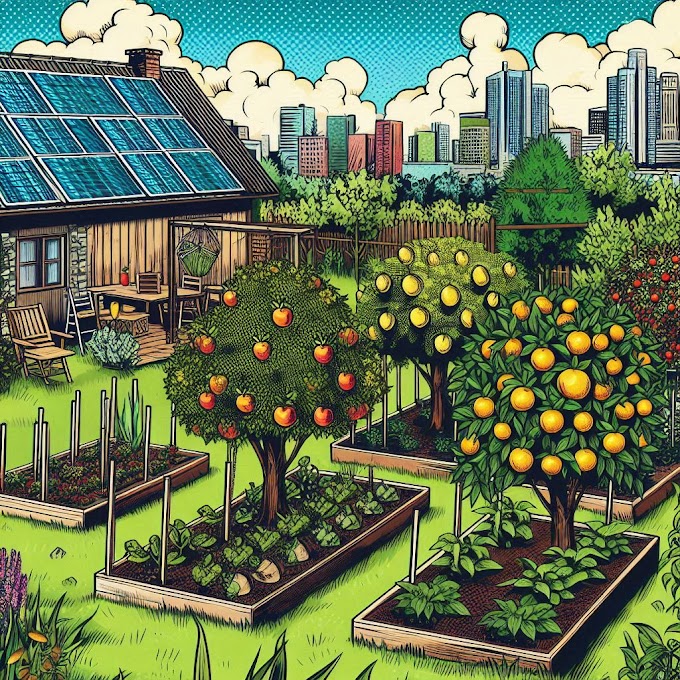Brussels Sprouts: A Nutrient-Packed Addition to Your Garden and Table
Brussels sprouts are a nutritious and delicious member of the Brassica family, prized for their compact size, mild cabbage-like flavor, and impressive health benefits. Whether roasted, sautéed, or steamed, Brussels sprouts add a burst of flavor and nutrients to any meal.
Here's everything you need to know about growing and enjoying Brussels sprouts:
Health Benefits:
1. Rich in Nutrients: Brussels sprouts are packed with essential vitamins and minerals, including vitamin C, vitamin K, vitamin A, folate, and potassium. They are also a good source of fiber and antioxidants, making them a nutrient-dense addition to your diet.
2. Supports Digestive Health: The fiber content in Brussels sprouts promotes healthy digestion and regular bowel movements. Fiber also helps maintain a healthy gut microbiome, which is essential for overall digestive health and immune function.
3. Heart Health: Brussels sprouts contain compounds called glucosinolates, which have been linked to lower levels of inflammation and reduced risk of heart disease. They are also rich in potassium, which helps regulate blood pressure and promote cardiovascular health.
4. Cancer Prevention: The antioxidants and phytonutrients in Brussels sprouts have been studied for their potential cancer-fighting properties. These compounds may help protect cells from damage, inhibit the growth of cancer cells, and reduce the risk of certain types of cancer, including colon, prostate, and breast cancer.
5. Supports Bone Health: Brussels sprouts are an excellent source of vitamin K, which plays a crucial role in bone metabolism and calcium absorption. Including Brussels sprouts in your diet may help maintain strong and healthy bones and reduce the risk of osteoporosis.
Culinary Uses:
1. Roasted Brussels Sprouts: Roasting Brussels sprouts enhances their natural sweetness and caramelizes the edges, creating a crispy and flavorful side dish. Simply toss Brussels sprouts with olive oil, salt, and pepper, then roast in the oven until tender and golden brown.
2. Sautéed Brussels Sprouts: Sautéing Brussels sprouts with garlic, shallots, or bacon adds depth of flavor and complexity to this versatile vegetable. Cook until tender-crisp for a quick and easy side dish that pairs well with a variety of main courses.
3. Steamed Brussels Sprouts: Steaming Brussels sprouts preserves their vibrant green color and delicate texture while retaining their nutrients. Serve steamed Brussels sprouts with a drizzle of lemon juice or a sprinkle of Parmesan cheese for a simple and nutritious side dish.
4. Shredded Brussels Sprouts: Shredded Brussels sprouts can be used raw in salads or slaws for a crunchy and nutritious twist. Alternatively, sauté shredded Brussels sprouts with olive oil and garlic for a quick and flavorful side dish.
5. Brussels Sprouts Casserole: Combine cooked Brussels sprouts with creamy cheese sauce, crispy bacon, and breadcrumbs for a comforting and indulgent casserole dish that's perfect for holidays and special occasions.
Growing Tips:
1. Soil and Sunlight: Brussels sprouts thrive in fertile, well-drained soil with full sun exposure. Choose a location in your garden that receives at least 6-8 hours of sunlight per day and amend the soil with compost or organic matter to improve fertility and drainage.
2. Planting: Start Brussels sprouts seeds indoors 4-6 weeks before the last frost date or sow them directly into the garden once the soil has warmed up in spring. Plant seedlings or transplant Brussels sprout plants into the garden, spacing them 18-24 inches apart in rows or clusters.
3. Watering: Keep the soil consistently moist but not waterlogged to promote healthy Brussels sprout growth. Water regularly, especially during dry periods, and mulch around plants to retain moisture and suppress weeds.
4. Pest and Disease Management: Brussels sprouts are susceptible to pests like aphids, cabbage worms, and cabbage loopers, as well as diseases like clubroot and black rot. Monitor plants regularly for signs of pests and disease, and take preventive measures such as crop rotation, companion planting, and using organic pesticides when necessary.
5. Harvesting: Brussels sprouts develop along the stem of the plant, starting from the bottom and moving upwards. Harvest sprouts when they reach a mature size of 1-2 inches in diameter, firm to the touch, and bright green in color. Use a sharp knife to cut sprouts from the stem, starting from the bottom and working upwards as they continue to mature.
By growing your own Brussels sprouts in the garden, you can enjoy the freshest, most flavorful sprouts while reaping the health benefits of this nutrient-packed vegetable. Whether roasted, sautéed, or steamed, Brussels sprouts are a versatile and delicious addition to any meal, providing a burst of flavor and nutrients with every bite.












